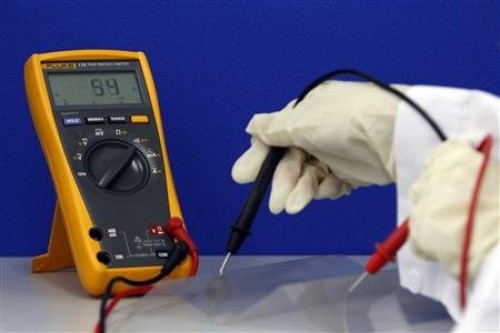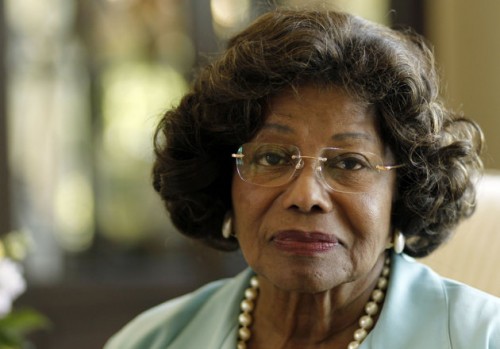By Jeremy Wagstaff and Sinead Carew
SINGAPORE/NEW YORK (Reuters) - The touted arrival this year of wearable gadgets such as computer displays strapped to wrists and in wrap-around glasses is just a step towards a bigger revolution in screens - those that can be bent, folded and rolled up.
Once freed from today's relatively heavy, breakable and fixed glass displays, tomorrow's devices may look very different, with screens that can be rolled out, attached to uneven surfaces, or even stretched.
But there's still some way to go.
"It becomes a product designer's paradise - once the technology is sorted out," says Jonathan Melnick, who analyses display technology for Lux Research.
There is no shortage of prototypes - South Korea's Samsung Electronics this year showed off a display screen that extends from the side of a device - but obstacles remain: overcoming technical issues, figuring out how to mass produce parts cheaply, and coming up with devices compelling enough for gadget buyers.
Screen technology - and the global small display market is seen more than doubling to around $72 billion by 2016, according to DisplaySearch - is still dominated by liquid crystal displays (LCDs), which require a backlight and sit between two sheets of glass, making the screen a major contributor to the weight of a device, from laptops to tablets.
"Most of the weight in a tablet is the glass structure in the display and the support structure around it to prevent it from cracking," said Kevin Morishige, a former engineer at Cisco Systems Inc, Hewlett-Packard Co and Palm.
LCD's dominance is already under threat from lighter Organic Light Emitting Diodes (OLEDs) that don't need backlighting, are brighter, offer a wider viewing angle and better color contrast - and can be printed onto a few layers.
FROM GORILLA TO WILLOW
Glass, however, is getting lighter and more flexible.
Corning Inc, whose toughened Gorilla glass became the screen of choice for many smartphones, will provide phones with curved glass edges as soon as this year. It is also now promoting Willow Glass, which can be as thin as a sheet of paper and is flexible enough to be wrapped around a device or structure. Initially, Willow will be used as a coating for products like solar panels, but it is eventually expected to create curved products.
A key selling point for Willow is more efficient production which involves so-called roll-to-roll manufacturing, like a printing press, rather than today's more costly batch manufacturing. But the commercialization of Willow as a flexible product is some way off, James Clappin, who heads Corning's glass technology group, told Reuters.
And glass has its limits.
"You can bend it, but you can't keep flexing it," said Adrian Burden, a UK consultant who has worked on several start-ups related to display technology, and holds patents in the field. This means that while glass is likely to continue to play a leading role in devices with curved displays, screens that users can bend, fold and roll will likely be plastic.
But plastic is not as robust as glass. "As soon as you introduce plastic substrates you have all kinds of issues with sensitivity to the environment," says Burden.
BARRIER FILMS, NANOPARTICLES
So while OLED and plastic would seem to be companion technologies they create an extra problem when laid together: they need so-called barrier films to prevent the various layers from leaking oxygen and moisture.
"There are barrier films in all sorts of products, for example food packaging, but the challenge is that OLED is one of the most sensitive materials we follow, and so creates huge challenges," says Lux Research's Melnick.
Singapore-based Tera-Barrier Films, for example, has developed a way to plug leaks in the layers using nanoparticles. Director Senthil Ramadas says that after years of delays the company last month started production in Japan and aims for mass production by end-2014. "You have several challenges in the value chain," he said. "All these things need to be established, and only now is it coming out."
And there's another problem: all the materials in a bendable display need to be bendable, too - including the transparent conductors that drive current through the display. Several technologies are vying to replace the brittle and expensive Indium Tin Oxide (ITO) used in most fixed displays, including nanowires, carbon nanotubes, graphene and conductive mesh.
Some of these technologies are close to production. Another Singapore-based firm, Cima Nanotech, for example, rolls a coating of silver-based conductive ink on a sheet which then self-aligns into a web of strands a few microns across that forms the conductive layer.
It's unlikely such shifts in the underlying technologies will yield products immediately. For one thing, "prototypes can be made," says Melnick, "but that's a long way from mass production as many of the processes and material in these devices face big yield and scaling issues."
ON A ROLL
This is gradually changing, some in the industry say, as production shifts from making parts in batches of sheets to the more efficient roll-to-roll process. "Batch is more expensive and slower than roll-to-roll, which needs new equipment and design - and takes time," said Ramadas at Tera-Barrier.
All this requires money, and manufacturers have to be convinced to invest in the new equipment.
Even after the success of Gorilla Glass, popularized by the Apple Inc iPhone, Corning is having to work hard to prepare customers for Willow displays. Clappin said customers want thinner devices and easier to produce glass, but Willow requires a completely different manufacturing set-up.
"When we talk about commercializing Willow a big part of our development activity is enabling the ecosystem to handle what is essentially a brand new material," Clappin added. "Nobody's accustomed to working with glass that bends and moves. It's a new material. The ecosystem needs to be trained to handle it."
He sees demand, particularly from video gamers, for Willow-based curved screens, but remains less convinced about rollable or foldable screens. "Conformable is in the near future. As far as flexible, bendable, fold-upable goes, I see that further out and I'm not even sure that's a viable product," he said.
That in turn requires figuring out what end users might want. "For us and for our clients it's not so much about the flexible display technology," says Brandon Edwards, Shanghai-based executive creative director of frog, a design company owned by India's Aricent. "That's a huge part of it, but what are the practical ways we can bring products to market and how fast, and what's the right cadence? What are consumers going to be responsive to?"
WHAT DO PEOPLE WANT?
For companies with deep pockets, like Samsung, this can mean building prototypes such as those displayed at international technology shows. But that doesn't guarantee success in selling products. Sony Corp, for example, promoted flexible OLED displays back in 2007. "Six years later they've not come up with anything," says Zhang Jie, senior scientist at Singapore's Institute of Metals Research and Engineering. "If Samsung's going to really drive this the application really needs to drive people and make them want it."
This slows down the process. In late 2011, Samsung told analysts it planned to introduce flexible displays into handsets "some time in 2012, hopefully the earlier part than later", but a year later the company said the technology was still "under development." In an investment note last month Jefferies said that while Samsung may introduce "unbreakable" screens this year, it didn't expect to see flexible displays in Samsung devices until 2014-15.
Ultimately, teasing out the technical problems may be only half the battle.
"This is the eternal question of the specialty materials industry," says Lutz Grubel, Japan-based head of marketing for German glass maker Schott's Xensation Cover 3D glass. "You have something, a material, and you're looking for an application. That's the game."
(Additional reporting by Miyoung Kim in SEOUL; Editing by Ian Geoghegan)



















